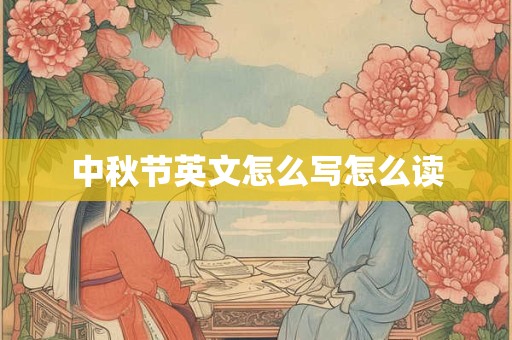As the moon shines bright and the autumn breeze whispers through the trees, the Mid-Autumn Festival, also known as Moon Festival, is a time-honored celebration in China, a tradition steeped in history and symbolism. The name "Mid-Autumn Festival" in English is written as "Mid-Autumn Festival" and is pronounced as "mɪd ˈɔːtəm ˈfɛstɪvəl."
The Origin of the Name
The "Mid-Autumn Festival" is named for its celebration in the middle of the autumn season, which falls on the 15th day of the eighth lunar month. This time of year is associated with the full moon, which is believed to be the brightest and roundest of the year. The full moon symbolizes completeness and unity, which is why this festival is also known as the "Moon Festival."
Pronunciation Breakdown
Breaking down the pronunciation of "Mid-Autumn Festival," we have:

- "Mid" pronounced as "mɪd," which is a short "i" sound followed by a "d" sound.
- "Autumn" pronounced as "ˈɔːtəm," starting with a "short 'o' sound," followed by a "long 'a' sound," and ending with a "short 'u' sound."
- "Festival" pronounced as "ˈfɛstɪvəl," beginning with a "f" sound, followed by a "long 'e' sound," and ending with a "short 'i' sound" and a "v" sound.
The Significance of the Moon
The moon holds a special place in the hearts of the Chinese people during the Mid-Autumn Festival. It is said that the moon is the brightest and fullest during this time, symbolizing the completion of the harvest season. Families gather to celebrate and give thanks for the bountiful crops. The full moon also represents the unity of the family, as people are often separated by distance during the year.
Traditional Foods
One of the highlights of the Mid-Autumn Festival is the consumption of mooncakes. These round pastries symbolize the full moon and are filled with sweet or savory ingredients, such as lotus seed paste, red bean paste, or salted egg yolk. Another traditional food is tangyuan, which are glutinous rice balls served in a sweet syrup and often filled with sweet sesame or red bean paste.
Mooncakes: A Sweet Treat with a Rich History
Mooncakes are not only delicious but also carry a significant history. During the Yuan Dynasty, it was believed that rebellious groups used mooncakes to communicate messages, as the wrappers could be hidden with messages inside. The mooncakes were given as gifts, and it was a way for the people to spread the word of the rebellion. Over time, the tradition evolved into a celebration of the harvest and family unity.
Moon Viewing
The festival is also a time for moon viewing, where people gather to admire the full moon. In ancient China, it was believed that the moon could bring good fortune and prosperity. Moon viewing is often accompanied by various activities, such as playing traditional games, telling stories, and enjoying lantern shows.
Decorations and Customs
The Mid-Autumn Festival is adorned with lanterns and other decorations. Paper lanterns are hung in windows and doors, and there are often lantern festivals with intricate designs and vibrant colors. Another custom is the making of mooncakes, which are then shared with friends and family.
The Modern Mid-Autumn Festival
In modern times, the Mid-Autumn Festival has become a time for family reunions and the sharing of love and gratitude. It is also a time for reflection on the year's accomplishments and for looking forward to the future. While the traditional customs and foods remain, the festival has also embraced modern elements, such as shopping and gift-giving.
The Moon Festival Abroad
The Mid-Autumn Festival is celebrated not only in China but also in many other Asian countries, such as Vietnam, Singapore, and Malaysia. Chinese communities around the world come together to celebrate their heritage and share the joy of the festival.
Conclusion
The Mid-Autumn Festival, with its name "Mid-Autumn Festival" and its pronunciation "mɪd ˈɔːtəm ˈfɛstɪvəl," is a time for celebration, family, and reflection. It is a festival that transcends time and distance, bringing people together to share in the beauty of the full moon and the warmth of the community.
